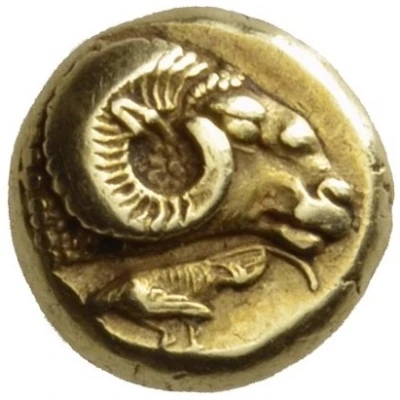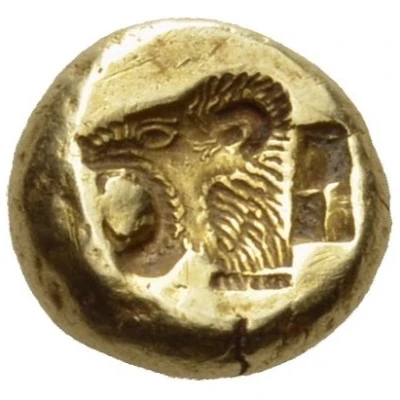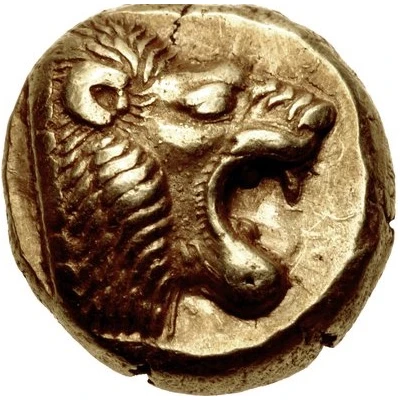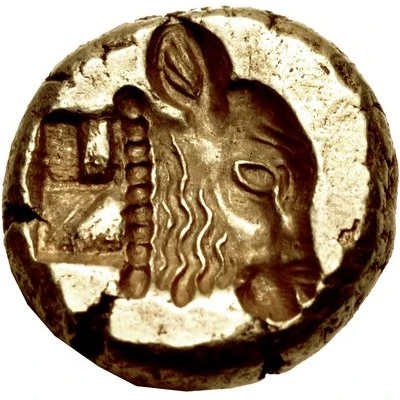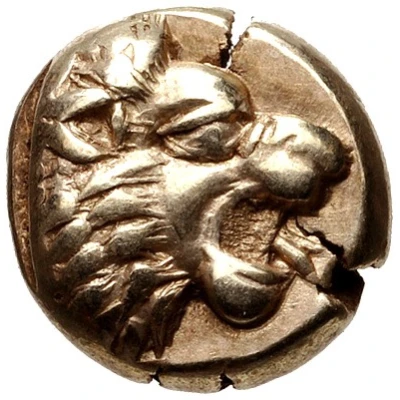
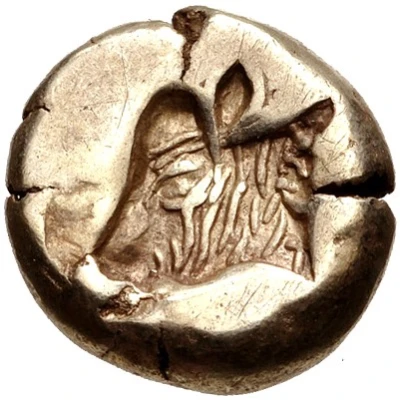

© Classical Numismatic Group, Inc.
Hekte 521 BC - 478 BC
| Electrum | 2.50 g | 10.0 mm |
| Issuer | Mytilene (Lesbos) |
|---|---|
| Type | Standard circulation coin |
| Years | 521 BC - 478 BC |
| Value | Hekte (14⁄3) |
| Currency | Drachm |
| Composition | Electrum |
| Weight | 2.50 g |
| Diameter | 10.0 mm |
| Shape | Round (irregular) |
| Technique | Hammered, Incuse |
| Orientation | Variable alignment ↺ |
| Demonetized | Yes |
| Updated | 2024-10-10 |
| Numista | N#178773 |
|---|---|
| Rarity index | 97% |
Reverse
Incuse head of calf left.
Interesting fact
The Hekte coin was used as a form of currency in the ancient Greek city-state of Mytilene on the island of Lesbos during the 6th century BC. It was made of electrum, a naturally occurring alloy of gold and silver, and weighed 2.50 grams. Despite its small size, the Hekte coin played a significant role in the economy of Mytilene, as it was used to purchase everyday goods and services. Its design featured an image of a lion's head on one side and an inscription on the other, which helped to identify its value and authenticity. Today, the Hekte coin is a rare and valuable collector's item, providing a glimpse into the economic and cultural practices of ancient Greece.
Price
| Date | Mintage | VG | F | VF | XF | AU | UNC |
|---|---|---|---|---|---|---|---|
| ND (521 BC - 478 BC) | - | - | - | - | - | - |
Values in the table are based on evaluations by sales realized on Internet platforms. They serve as an indication only for Hekte (521 BC - 478 BC) coin.
